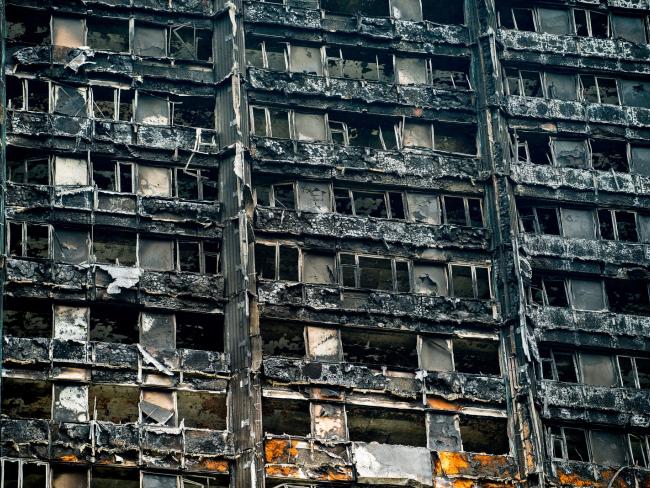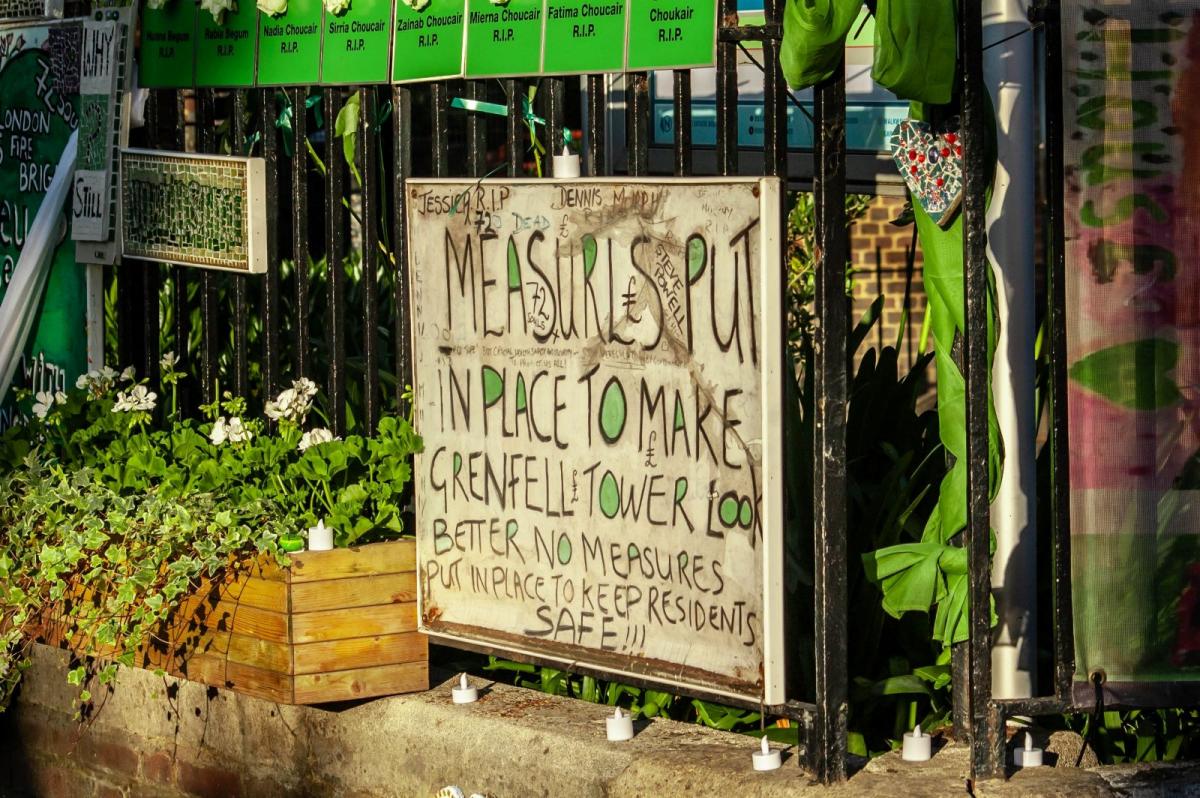9 September 2024

The result of avoidable failure. The remains of Grenfell Tower after the fire. Photo John Gomez / shutterstock.com.
The Grenfell Tower Inquiry has issued a clear message in its final report on the fire, which said, “The simple truth is the deaths that occurred were all avoidable”. And it goes on to set out in great detail how that happened.
On 4 September the inquiry published its final report, over seven years after the fire which happened on 14 June 2017. This report (phase 2) runs to 1,700 pages, in addition to the earlier phase 1 report (over 800 pages) issued in October 2019.
Evidence
The final summing up will not come as a surprise; the evidence presented to in inquiry spoke for itself. The consequences and wider ramifications will take some time to fully materialise, not least any prosecutions that are waiting on the inquiry’s findings.
The total cost of the inquiry is over £200 million. It gathered an immense amount of information in over 400 days of hearings, which ended in November 2022.
“Decades of failure by governments and organisations at every level.”
The further details in the latest report fully justify inquiry chairman Martin Moore-Bick’s damning indictment of “decades of failure by governments and organisations at every level”, creating a shameful chain of events, the fire being the last, catastrophic, link. Counsel to the inquiry described this web of blame in his closing statement to the hearings.
The inquiry looked at the history of residential fires from 1991 to 2017: it found not only systemic incompetence but also greed. There were many missed opportunities for those in authority, whether in government or the construction industry, to heed warnings and identify risks.
Deliberate
Failure to do so was in many cases the result of deliberate and reckless actions to maximise company profits or to reduce costs. Testing processes for combustibility were manipulated by cladding and insulation manufacturers, who “engaged in deliberate and sustained strategies to...mislead the market”.
Contractors for the refurbishment of Grenfell Tower the year before the fire were selected on grounds of cost-cutting, as was the “cavalier” architectural firm engaged.
The London Fire Brigade suffered from a chronic lack of leadership. Fire safety standards known to be inadequate were left to languish on the books. The training of firefighters was deficient, especially Incident Command.
Culpability
Culpability for the fire was across the board, but it stemmed from the top. Government “failed to act on what it knew” about cladding risks. The context was obsessive deregulation, originating with the 2010-2015 coalition government’s “bonfire of red tape” under David Cameron. His housing secretary at the time, Eric Pickles, still does not accept the link between deregulation and the fire.
The Fire Brigades Union has responded, saying the report vindicates their warnings over decades that combustible cladding, deregulation, cuts, and semi-privatisation of building control were endangering lives.
Compromised
Failure of oversight compromised safety: the Building Research Establishment, privatised in 1997, is singled out for its lack of scientific rigour and implied collusion with dishonest suppliers. Local government in the form of the “badly run” Kensington and Chelsea Tenant Management Organisation was forced to admit the inadequacy of its building control department.
‘Worried tenants were ignored as an inconvenience.’
Fire safety reports were not acted on. Grenfell tenants, frantic with worry, were ignored as an inconvenience. Its former CEO was found to have established a “pattern of concealment in relation to fire safety matters”.
The consequences of poor fire safety standards are still being felt throughout the country. A total of 4,630 residential blocks, all in England, remain wrapped in dangerous cladding.
Risks
Two recent incidents in London highlight the risks. The week before the inquiry report came out, a privately owned block of flats with “non-compliant” cladding in Dagenham caught fire. And on the day it was released, a high rise block was ablaze in Catford.
The Report contains 58 recommendations including: a new single regulator for construction and materials; manufacturing transparency; a single government mister responsible for fire safety; a review of safety guidance; a review of the law on “higher-risk building” – to include occupants, not only height; a College of Fire and Rescue; and a review of the much-criticised stay-put rule compared with use of firefighters’ initiative.
Not binding
The recommendations will not be binding and may not be enough without effective enforcement. Labour ministers are already slow-pedalling on the urgency of cladding removal and blocking miscreant companies from government contracts.

The FBU calls for the reversal of recent deregulation and for building safety to be brought under public ownership. It will consider the inquiry report in detail and says that it raises a number of structural problems which need to be comprehensively addressed – including setting of national standards based on the best expert advice and giving voice to firefighters and control staff.
Wait for justice
And still the survivors and families of the victims, desperate for “justice” must wait even longer to see if anyone is held accountable for the failures set out in so much detail. The Metropolitan Police promises criminal charges only by the end of 2026.
The FBU has run a persistent and wide-ranging campaign, Grenfell: Never Again, to highlight the lack of building safety. It says the fate of the 72 people who died and the impact on survivors should be foremost in mind when responding to the inquiry. And that response – ending the circumstances that led to their deaths – must not wait on long-delayed prosecutions.
